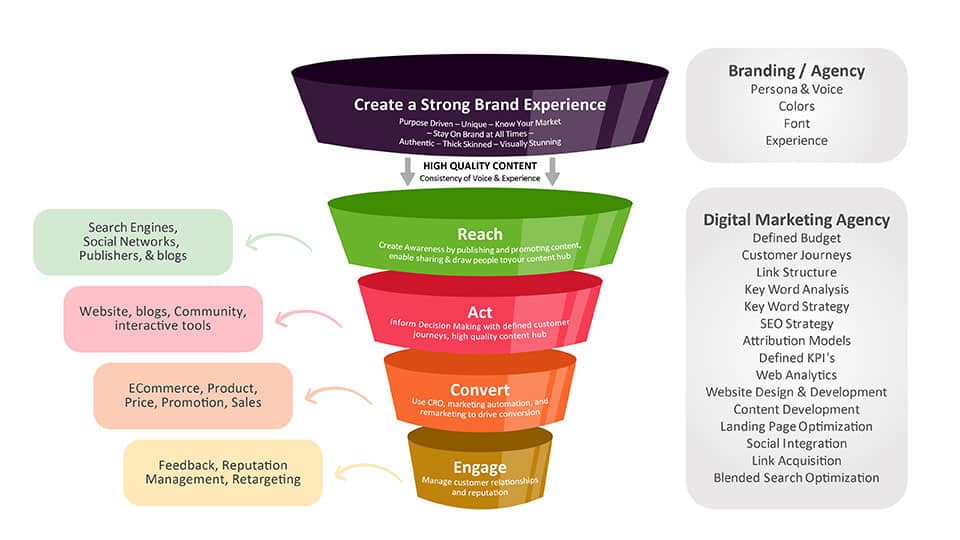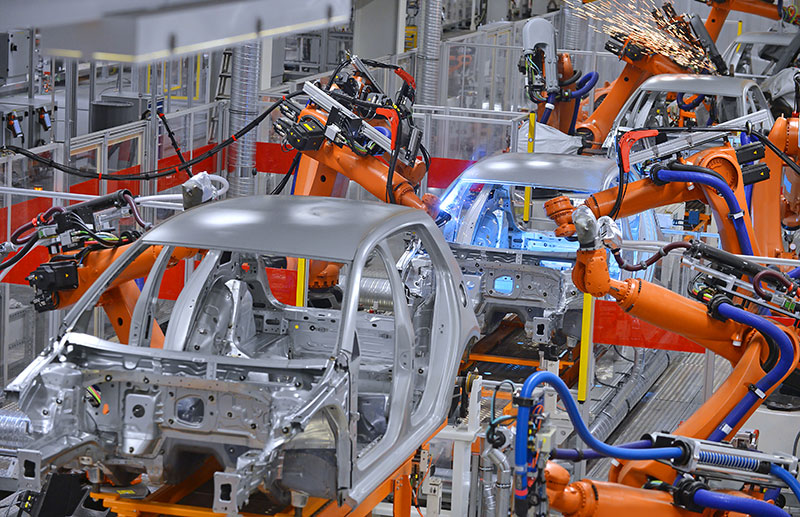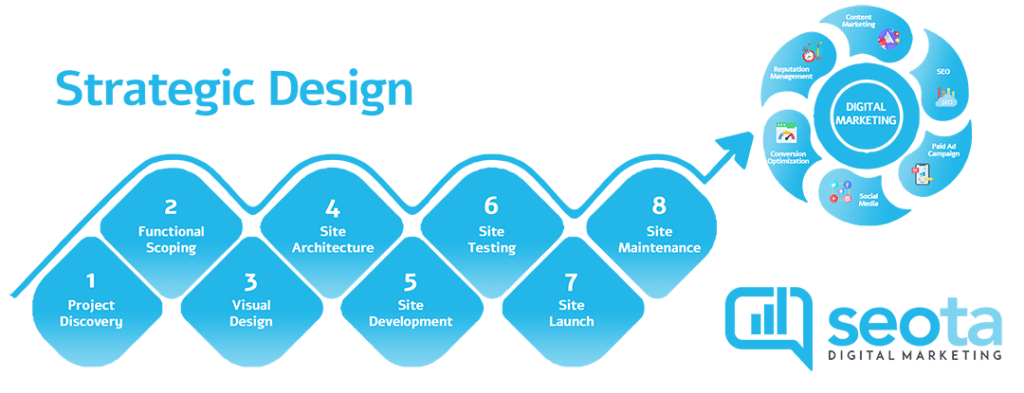The past few years have been rife with setbacks for the automotive industry but there is a silver lining. The traditional pyramid-style supply chain with OEMs on top and suppliers at the bottom is being equalized so profits no longer decrease from top to bottom.
Amid tech advances, electrification, and AI systems, Tier 1 and Tier 2 auto suppliers must pivot and focus on securing long-term partnerships that improve profitability and allow for continued innovation. Seota Digital Marketing is a web development and search engine optimization agency that loves to work with manufacturing companies.
Equal opportunity for suppliers, not just OEMs
There are several major transformations impacting the auto industry, according to Deloitte’s 2021 Global Automotive Supplier Study. These major shifts include increased interest and pressure toward electrification, shared mobility, and technology convergence.
Interest in electric vehicles (EVs) is growing
More than half of U.S. adults who watched Super Bowl LVII said they would be interested in purchasing an electric vehicle in the next 5 years, according to a recent survey from decision intelligence firm Morning Consult. Increased regulatory pressure to reduce emissions combined with the increase in EV manufacturing improvements have been major drivers for the growth of e-powered vehicle manufacturing.
Shared mobility
Younger urban customers are turning to ride-hailing services such as Uber and Lyft rather than purchasing their own vehicles. This shift in consumer preference has been further enabled by the saturation of smartphones and advanced 5G networks that provide faster connection speeds and better coverage. As an auto supplier, you should look at how you can capitalize on this trend by offering services that are tailored to the needs of ride-hailing companies, such as efficient parts manufacturing or specialized maintenance services for fleets of vehicles.
More connected cars mean more revenue opportunities
Demand for modern, innovative suppliers will only increase and savvy suppliers are adjusting their marketing to signal to OEMs that they’re the premier leader in their space. In 2021, McKinsey estimated that about 95 percent of new vehicles sold globally would be digitally connected by 2030. This push for “connected car” experiences provides auto suppliers with many profit opportunities, from IoT integrations and feature subscriptions to repair and maintenance services.
Modern website design signals a future focus
Modern website design signals to OEMs that a supplier is capable and willing to invest in staying competitive in their industry. Like all of your marketing assets, your website serves as a gut test for partners interested in working with you. Here are tips to ensure your website is compelling and well-designed:
- Invest in modern design: Web design trends and it’s best to update your website every few years to avoid looking outdated. An outdated website is a sign of an outdated company to millennial and Gen Z generations who expect responsive and easy-to-use websites.
- Showcase social proof: Featuring customer testimonials and case studies on your website is a proven way to build credibility, but social proof can also include trust-building signals like the number of customers served or press mentions about your company.
- Build with user experience in mind: There’s nothing worse than sending someone to your website and having them get lost or overlooking a page because it’s buried. Review your website to ensure it’s presenting information in the most accessible, logical way possible for your target users.
Smart SEO puts you in front of decision-makers
Younger generations that grew up with technology now hold leadership roles at many companies. For users within this demographic, any company not found on the first page of Google doesn’t exist. Prioritizing and evolving your SEO efforts will help you stay relevant and visible as companies led by these forward-thinking individuals search for suppliers who share their modern mindset.
Start with smart keyword research.
Find keywords that align with your services and products, then organize them into topic clusters. Then, build your website pages around these topic clusters so they’re designed to rank competitively for these terms in search results. Be sure to understand the user intent behind each of your keywords so you can properly satisfy your target audience with helpful content.
Create EAT content that’s helpful and valuable
The acronym EAT stands for Expertise, Authority, and Trustworthiness. It is a concept that was developed by Google to measure the quality of website content and the websites themselves in order to rank them higher in search engine results pages (SERPs). EAT content is SEO content that shows your expertise, authority, and trustworthiness relating to your topic and your industry.
Here are some practical steps you can take to create EAT content on your website:
- Discuss industry topics related to your services and products.
- Write informative blog posts about relevant industry topics to build your credibility and authority with your customers and also increases your rank position in search engines.
- Build links from other industry leaders to your website to increase visibility in search engines and generate more traffic to your site from customers who are interested in what you offer.
Optimize your website for Page Experience and Core Web Vitals
Part of how Google ranks websites in search results is by scoring them on their page experience. Since Google wants people to keep using its search engine, it’s in its best interest to give people results that load fast, are logically organized, and are responsive on all devices.
There are several main categories of Page Experience to consider:
- Core Web Vitals: This is a set of metrics relating to the loading, interactivity, and visual stability of your web pages. Largest Contentful Paint (LCP) measures loading performance and should be under 2.5 seconds. First Input Delay (FID) scores the interactivity of your web pages and should ideally be less than 100 milliseconds. Cumulative Layout Shift (CLS) assesses the visual stability of your web page and should be less than 0.1.
- Mobile-friendliness: Since Google started using mobile-first indexing, it primarily crawls the mobile version of your website and scores its performance and appearance. This is why responsive web design is so critical and essential to your SEO. You can test the mobile responsiveness of your website using Google’s mobile testing tool.
- Intrusive interstitials: Google defines interstitials as “page elements that obstruct users’ view of the content.” This is why it’s best to use banners instead of full-page pop-ups and similar elements.
- HTTPS vs. HTTP: Having an unsecured website can impact your rank positions on Google’s search results pages ever since Google started treating the presence of a security certificate as a lightweight ranking signal.
Match your content marketing to the buyer journey
Content marketing is essential for auto manufacturers and suppliers to reach their ideal customers. Understanding the buyer journey is a critical step in developing an effective content strategy. The modern buyer journey includes the following stages:

- Awareness: In the first stage, people are focused on researching their pain points or problems to understand why it’s occurring. The content you create in the Awareness stage should be designed to highlight a problem and explain the root cause.
- Consideration: Once people understand their problem, they begin researching which solutions are available to them. At this point, they’ll also begin building a filter based on their unique needs and circumstances, including budget, timeline, and desired features. Your Consideration content should describe all solutions available to solve their problem.
- Decision: After narrowing their solutions to a select few, buyers begin to compare these finalists to arrive at the best fit for their needs and buying criteria. To differentiate your company at this stage, create case studies, showcase reviews and testimonials, and link to press mentions that describe huge company milestones and achievements.
- Loyalty: Even after you’ve converted a lead into a customer, your work isn’t done. In 2019, Neilsen highlighted that 92% of buyers considered themselves as being disloyal to brands. Unlike previous generations, modern buyers are more interested in the value and quality of a product or service than in the associated brand name. This means your content at this stage should be focused on helping them get the most value from your product or service.
As TrustRadius’ 2022 B2B Buying Disconnect highlighted, roughly 90% of B2B buyers want to go most, if not all, of the buyer stages on their own. This is where your content marketing can help you generate leads. Rather than employing salespeople, you can invest in content that explains your product or services and offers pricing information so they’re able to qualify or disqualify themselves. This will reduce the number of unqualified leads and increase the purchase readiness of the leads that speak with your salespeople.
Wise OEM partnerships are key to your survival and your success
As EVs overtake combustion-engine-powered vehicles, OEMs are being forced to shift their manufacturing processes and reevaluate their profit centers from a hardware-based sales model to one based on software and connectivity. This shift in demand is prompting a massive shift in OEM-supplier relationships. As Wards Auto points out, leading OEMs will give their suppliers a seat at the table, soliciting their ideas without compromising on their share of the profit.
Software capabilities will become even more critical as OEMs seek to differentiate themselves by providing the best-connected experience for consumers. Technology companies seem to have an edge in this respect, but many established OEMs will be looking for ways to shift their manufacturing processes with the help of innovative suppliers so they don’t lose their throne to the latest tech startups.
As an auto supplier, you can position yourself for success by expanding your software capabilities or software integrations and working only with OEMs who are willing to be reasonable on cost, collaborate on engineering changes, and avoid conflicts of interest or theft of your intellectual property.
Additionally, partnering up with other auto suppliers that specialize in related or complementary areas can open up new possibilities for your business by diversifying your offering within the automotive industry. This allows you to provide better services for OEMs and customers alike, as well as increase your share of the market.
Some recent examples of OEM-supplier partnerships include:
- Intel subsidiary Mobileye recently expanded its partnerships with Ford and Volkswagen. It also unveiled EyeQ, a chip geared toward autonomous vehicle operation with staggering speed and processing power.
- British data specialist Wejo has confirmed a deal with automaker Toyota’s North American arm.
- Qualcomm announced in 2022 that it had entered agreements with Honda, Volvo, and Renault to further digitize their user interface, navigation, and safety controls and work toward an autonomous future for the automotive industry.
- The Cofinity-X partnership was formed to accelerate the adoption of Catena-X and ensure long-term success for all its partners, as well as the industry as a whole.
Video marketing builds your credibility and audience connection
You can also use video marketing to stand out from other auto manufacturers and suppliers. Videos can also be used to illustrate customer success stories and showcase your company’s culture. Video content engages leads who prefer to watch rather than read about your services and products. But not all videos are equal. It’s critical to create videos that have a specific goal in mind for the watchers:
- How-to videos allow prospects to learn more about the product or service and how to use it.
- Explainer videos are a great way to explain complex concepts in an engaging and concise manner, allowing customers to quickly understand your product’s value propositions.
- Demo videos give customers the opportunity to experience what your product can do for them firsthand.
In order to reach wider audiences faster, consider repurposing existing videos into social content or embedding them in related blog posts. This increases the reach of your content and maximizes its effectiveness by reaching more potential customers. You can also generate transcripts for each of your videos so search engines like Google and Bing can index them. This can lead to increased visibility for your brand over time.
Contact Seota for automotive supplier marketing that shows your winning difference
At Seota, we specialize in helping automotive suppliers succeed online through our comprehensive digital marketing services that are tailored specifically toward your goals and marketing needs. Contact us today so we can help you create a successful digital presence for your company!






